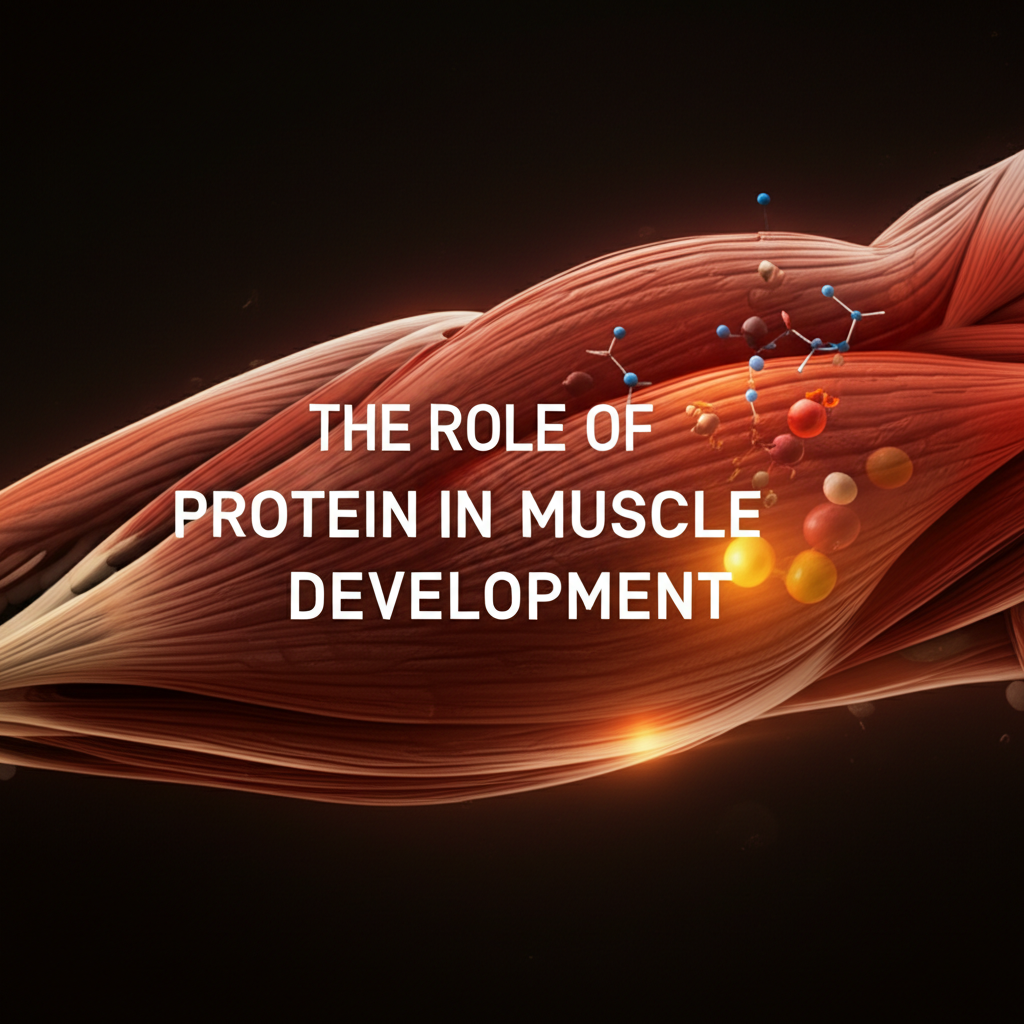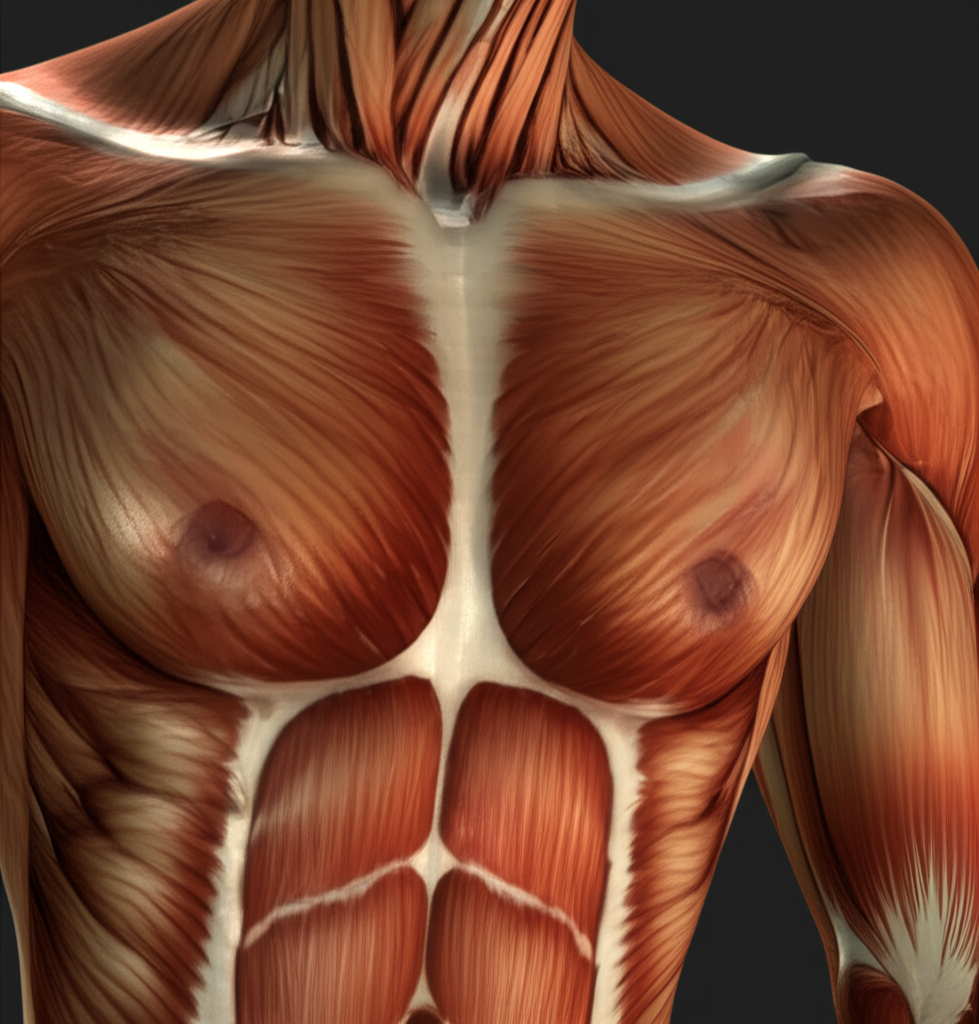The Role of Protein in Muscle Development

Protein is essential for building and repairing muscles. Understanding its role helps you fuel workouts effectively for better muscle development.
Key Takeaways

- Muscle growth relies on protein synthesis.
- Protein provides the building blocks (amino acids) our bodies need.
- Adequate protein intake supports muscle repair after exercise.
- Different protein sources offer varied benefits.
- Timing and quantity of protein intake matter for results.
- Combining protein with resistance training maximizes muscle development.
Have you ever wondered what makes muscles grow stronger and bigger? You see people at the gym diligently lifting weights, and many talk about protein. But what exactly is protein doing in your body, and how does it lead to muscle development? It’s a common question, and understanding it can be the key to unlocking your fitness potential. Don’t worry, we’ll break it down into simple, actionable steps. This guide will explain the role of protein in muscle development in an easy-to-understand way. Let’s dive in!
What is Muscle Development?
Muscle development, often called muscle hypertrophy, is the process where your muscle fibers grow larger. This happens primarily in response to stress, like the kind you experience during exercise. When you challenge your muscles, microscopic tears occur in the muscle fibers. Your body then works to repair these tears and, in doing so, makes the muscle fibers thicker and stronger. This adaptation is how your muscles get bigger and more capable.
Think of it like building a brick wall. The bricks are like your muscle fibers. When you add stress (like a storm hitting the wall), some bricks might get damaged. Your body then acts like a builder, gathering new materials (protein) to fix those damaged bricks and even reinforcing them to make the wall stronger against future storms. This continuous repair and rebuilding process is the essence of muscle development.
The Crucial Role of Protein
Protein is one of the three macronutrients (along with carbohydrates and fats) that your body needs in large amounts. Its primary function throughout the body is to act as a building block. Proteins are made up of smaller units called amino acids. These amino acids are like the individual LEGO bricks that the body uses to build and repair tissues, including your muscles.
When you consume protein, your digestive system breaks it down into amino acids. Your body can then use these amino acids to create new proteins. For muscle development, this is critical. After a workout session that stresses your muscles, your body needs amino acids to repair the damaged muscle fibers and to build new ones, making them larger and stronger.
Protein Synthesis: The Engine of Muscle Growth
The actual process of building muscle involves something called protein synthesis. This is the biological process where your cells use information from DNA to build proteins. In the context of muscles, when you exercise, especially with resistance training, you create a signal for MPS to increase. MPS (Muscle Protein Synthesis) is the overarching term for the building of new muscle proteins.
When you have sufficient amino acids available in your bloodstream (thanks to the protein you ate), your body can effectively carry out MPS. This leads to muscle growth. Conversely, if you don’t consume enough protein, your body might break down existing muscle tissue to get the amino acids it needs, which works against muscle development. According to the National Institutes of Health (NIH), protein is vital for tissue repair and growth.
Muscle Breakdown vs. Muscle Building
It’s important to understand that muscle is constantly in a state of turnover. This means it’s always being broken down and rebuilt. There’s a daily balance between muscle protein breakdown (MPB) and muscle protein synthesis (MPS). For muscle development to occur, the rate of MPS must be greater than the rate of MPB over time.
Exercise, particularly resistance training, stimulates MPS. However, it also temporarily increases MPB. The net effect of exercise on muscle growth depends on your nutritional intake, especially protein. If you provide your body with enough amino acids through protein consumption, MPS can outpace MPB, leading to a net gain in muscle mass.
How Much Protein Do You Need for Muscle Development?
Determining the right amount of protein is key. While general recommendations might suggest around 0.8 grams of protein per kilogram of body weight per day for sedentary individuals, those looking to build muscle need significantly more.
General Recommendations for Muscle Growth:
Most research and sports nutrition organizations suggest that individuals engaged in regular strength training should aim for:
- 1.6 to 2.2 grams of protein per kilogram of body weight per day.
For example, if you weigh 70 kilograms (about 154 pounds), this translates to needing between 112 and 154 grams of protein each day.
It’s important to spread this intake throughout the day rather than consuming it all in one meal. This helps maintain a steady supply of amino acids for muscle repair and synthesis.
Factors Influencing Protein Needs
While the 1.6-2.2 g/kg range is a good starting point, individual needs can vary based on:
- Training Intensity and Volume: More intense and frequent workouts require more protein for recovery and growth.
- Training Experience: Beginners might experience rapid initial gains and may have slightly different needs than advanced athletes.
- Overall Calorie Intake: If you’re in a calorie deficit (trying to lose fat), you might need slightly more protein to preserve muscle mass and promote MPS.
- Age: As people age, their bodies can become less efficient at utilizing protein for muscle building.
A study published in the Journal of the International Society of Sports Nutrition highlights that higher protein intake (within this recommended range) is generally safe and effective for promoting muscle hypertrophy.
Timing Your Protein Intake
While the total daily protein intake is the most critical factor for muscle development, when you consume protein can also play a role. The “anabolic window” is a concept that suggests you should consume protein shortly after exercise to maximize muscle growth.
The Anabolic Window: Myth vs. Reality
The idea of a strict 30-60 minute post-workout anabolic window has been somewhat oversimplified. While consuming protein around your workout is beneficial, the body can utilize protein for several hours after exercise. However, ensuring protein intake both before and after training can be a smart strategy.
- Pre-Workout: Consuming protein 1-3 hours before your workout can ensure amino acids are available during your exercise session
